HIP PAIN
True hip pain is not what many people think. It can be difficult to isolate. Most think it is on the bony part that you can feel on the side, but in fact that is the greater trochanter of the hip which is quite some way from the joint. The actual hip is far deeper than that and as a result true hip pain is felt deep in the groin. It can easily be misdiagnosed as groin strains or resultant from back pain, both of which can cause similar symptoms.
FEMOROACETABULAR IMPINGEMENT (FAI)
FAI affects the hip joint in young and middle-aged adults. It can occur when the ball shaped femoral head is misshapen and doesn’t have full range of motion inside the acetabular socket, or when the socket is too deep. FAI is essentially a ‘square peg in a round hole’. FAI can cause labral tears and can subsequent damage to cartilage inside the joint.
Hip arthroscopy can be effective in treating this condition if the amount of damage is not too severe.
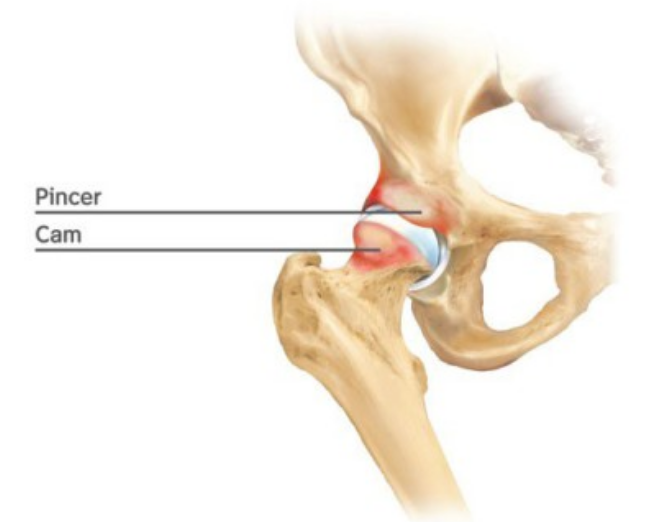
DEVELOPMENT DYSPLASIA OF THE HIP (DDH)
DDH is a congenital (present at birth) condition of the hip joint, occurring once in every 1,000 babies. In DDH the hip socket is too shallow. In severe paediatric cases, the ball of the femur can slip either partially or completely out of the socket.
However, milder forms of DDH may not be picked up until adulthood when the hip becomes painful. The issue is that with a shallow socket, the forces going through the hip are concentrated over a smaller area, causing increased wear and arthritis. It also predisposes patients to labral damage and tears.

ARTHRITIS
The most prominent symptom of hip arthritis is pain and/or stiffness. Most patients think that their hip is in the region of the buttock or on the side (where you can feel bone) and are surprised to learn that true hip pain is most commonly experienced in the groin. The pain can radiate down the front of the thigh, to the side and into the buttock as well. Occasionally it goes all the way down the thigh to the knee – this is because the hip and knee have an overlapping nerve supply.
Patients with significant hip disease may have a limp and occasionally one leg may feel shorter than the other. As the disease progresses, the hip becomes painful and stiff. Common symptoms people notice is difficulty cutting toenails or putting on shoes and socks. Sleeping often becomes disrupted as a result of pain. As the condition deteriorates, you may have to take a break even after walking short distances. With end-stage bone-on-bone contact, you may sometimes feel the hip creaking during walking, although most people do not wait that long before they have it replaced.
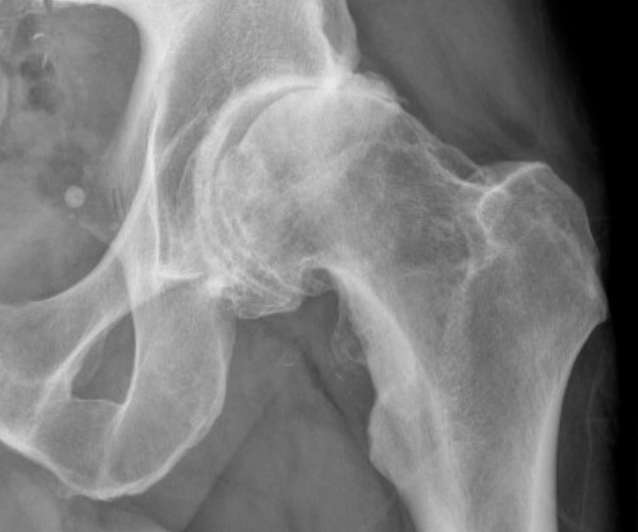
OSTEOARTHRITIS (OA)
Osteoarthritis of a joint arises from the wearing away of cartilage. The cartilage covers the parts of the bones that move against each other. Cartilage, in combination with the body’s lubricating joint fluid provides almost frictionless motion between the two surfaces. Without this protection, the bones themselves rub together which causes pain and subsequent stiffness. Patients who have early-stage osteoarthritis often notice pain at the beginning of a movement or during the first few minutes of exercise before the joints are given a chance to warm up. Once activity gets underway, the pain usually diminishes, although it is likely to increase again after resting for several minutes. As the condition worsens, pain may be present even at rest. Symptoms are generally aggravated even further in cold or wet weather conditions. Approximately 50% of people over the age of 35 display early signs of the disease. The most common causes of OA in younger adults are due to subtle developmental deformities such as femoroacetabular impingement or developmental dysplasia (see below).
INFLAMMATORY ARTHRITIS
Inflammatory arthritis (e.g. rheumatoid) is a condition where the body’s immune system attacks the joints causing inflammation and pain. The synovium (lining of the joints) swells and joints become stiff and harder to move, especially early in the morning. There is no known cure, although various medicines can help ease symptoms. Joint replacement surgery is very effective in easing the pain and stiffness.
AVASCULAR NECROSIS (AVN)
Avascular necrosis is a disease where there is celluar death (necrosis) of bone components due to interruption of the blood supply. Without blood, the bone tissue dies and the bone collapses. If avascular necrosis involves the bones of a joint, it often leads to destruction of the joint articular surfaces.
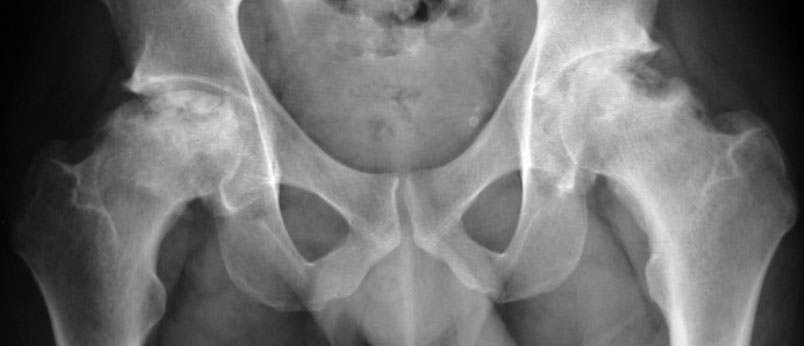
PERTHES’ DISEASE
Perthes’ disease affects the head of the femur during childhood; it affects around 1 in every 20,000 children. The blood supply to the growth plate of the bone becomes inadequate and results in the bone and cartilage softening and breaking down, a process called necrosis. This can lead to the head of the femur beign deformed or flattened. The effects of this can continue into adulthood and cause osteoarthritis.
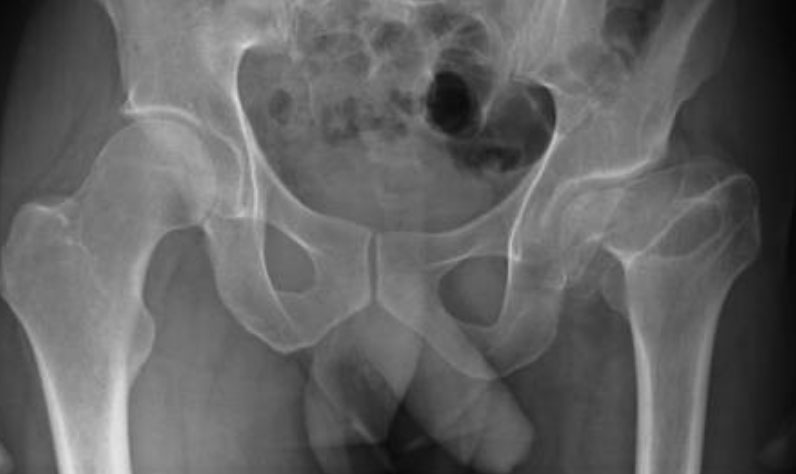
SLIPPED UPPER FEMORAL EPIPHYSIS (SUFE)
This is a condition involving the end of the femur (thigh bone), where the epiphyseal plate (growth plate) weakens and the head of the femur (ball) slips downwards and backwards. This leads to the ball not being as circular as it shoudl be, which again leads to increased frictional forces (similar to impingement) in the joint and subsequent wear.
SOFT TISSUE INJURY AND MUSCLE TEAR
Muscle tears and inflammations around the hip are very common. They can be isolated injuries or secondary to muscle balance problems. The most common is laterally based hip pain, felt on the side of the hip. This has many names; trochanteric bursitis and greater trochanteric pain syndrome (GTPS) are the most common. There is often no specific injury and is usually due to poor core stability. GTPS often responds to physiotherapy alone. Occasionally, ultrasound guided injections are necessary to help calm things down, but it rarely needs surgical intervention.
Acute muscle tears are different. They are high-energy injuries that usually occur as a result of eccentric contraction of the muscle. The most common muscle tears around the hip are the hamstrings (at the back) and rectus femoris (at the front). Often, these also can be treated conservatively with ice, rest and physiotherapy before a gradual return to normal activities. However, occasionally if bad enough, surgical repair may be needed.
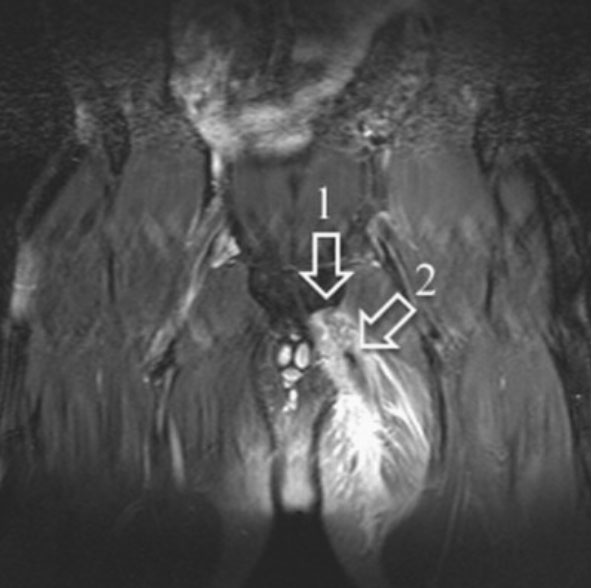
SNAPPING HIP SYNDROMES
Snapping Iliotibial Band
This is mainly seen in teenage girls and younger women. It is often described as a dislocating hip as the patient can make the hip ‘jump’, by leaning on it and pushing the hip out to the side. What actually is a snapping iliotibial band (ITB)? The ITB is a thick band of fibrous tissue that runs down the outside of the thigh. Snapping is secondary to a muscle balance problem where the ITB is being held tighter than
normal. It sits just over the greater trochanter (bony part of the hip) and can ‘bowstring’ across it, causing the snap. It is often painless, but
if associated with bursitis can be painful.
Snapping Psoas
This is very commonly seen (or heard!) in patients with underlying hip problems. It is an audible ‘snap’ or ‘clunk’ which is felt and heard when moving the hip from a flexed to extended position. Again, it is a muscle balance problem and caused by the psoas muscle getting caught on top of the hip and then suddenly giving. It can be an isolated cause of hip pain as if it is tight, it compresses the hip joint from the outside and is thought to cause a form of impingement (psoas impingement). It is often misdiagnosed as the labrum flicking in and out of the joint.
EXTRA-ARTICULAR IMPINGEMENT
ISCHIOFEMORAL IMPINGEMENT (IFI)
Ishiofemoral impingement is a recently recognised condition where there is abnormal contact or pinching between the lesser trochanter of the femur and the ischium (‘sit-bone’) of the pelvis. It is almost exclusively seen in women due to their anatomical variances from men. It can be seen on MRI where there is inflammation of the Quadratus Femoris muscle in the absence of any acute injury. The symptoms are of chronic buttock pain which is worse with exercise and hip extension.

SUBSPINE IMPINGEMENT (SSI)
Subspine impingement is another recently recognised condition where the anterior inferior iliac spine (AIIS) of the pelvis hangs lower than usual. This causes restriction of movement and pain in flexion of the hip as it can come into contact with the femoral neck.
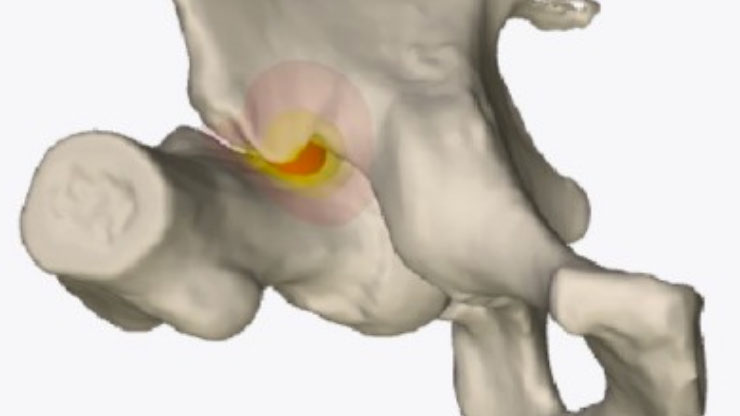
RECOGNISED BY ALL THE MAJOR INSURERS


